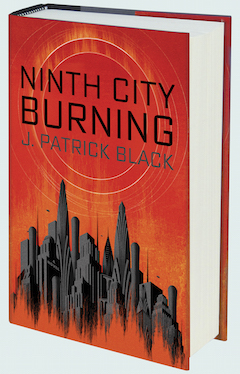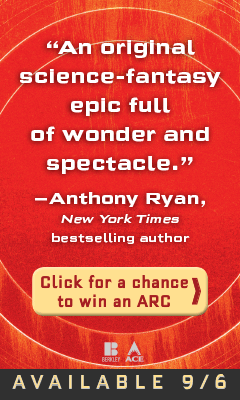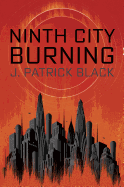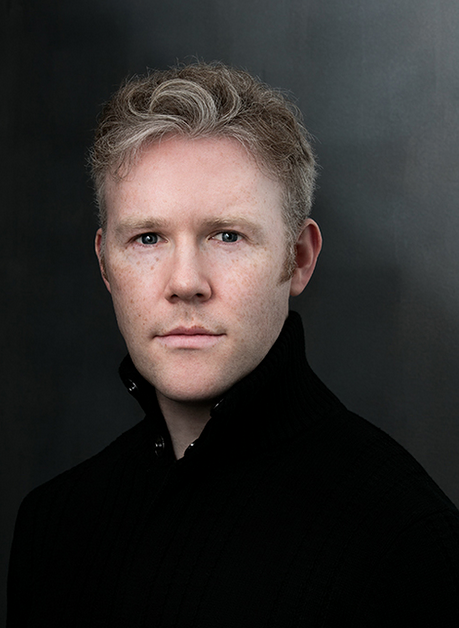Ninth City Burning
by J Patrick Black
It has been 500 years since the apocalyptic Valentine's Day attack, when aliens wielding unimaginable powers descended on Earth and left mankind's cities in ruins. Humanity would have gone extinct were it not for its ability to harness a particular power, thelemity, a hitherto unknown universal force, like gravity or electromagnetism, but with properties more akin to magic than science. By using thelemity, mankind repelled the attacking Valentines, as the aliens came to be called, and fought them back through a network of dimensional portals. There the battle ground to a halt and became a centuries-long war of attrition.
What was left of humanity reorganized itself into the Principate, a series of 12 grand, thelemity-powered cities spread across the globe. These essentially military dictatorships each maintain a Legion whose members fight at the Front, many dimensions away, and protect Earth from sporadic Valentine raids. Each Principate also rules hundreds of settlements, whose residents are kept in the dark about thelemity yet are still forced to provide supplies and conscripts for the war effort. In the wilds of Earth, beyond the bounds of the settlements, roam the unincorporated peoples, barbarians and nomads separated entirely from the ongoing struggle for humanity's future.
As a lifelong resident of Ninth City, 12-year-old Jax is familiar with the wonders of thelemity. But his life has just gotten complicated. Jax returns to his classes at the School of Rhetoric having discovered he's a fontanus, a source of thelemity, with a one-in-many-millions ability that makes him an essential part of the world's survival. The first demonstration of his new status comes quickly, when Jax is called upon to power Ninth City's colossal defense guns during a Valentine raid. Should the attackers overcome the Ninth Legion and the City guns, Jax will be the only thing preventing immediate obliteration.
Out in the wilderness, Naomi, a girl Jax's age, and her older sister, Rae, seek a safe refuge for their nomadic tribe during the coming winter. Their tribe, or coda, are derided by those in settlements. But Naomi and Rae's group are more like wandering traders than the barbarous, semi-feral tribes like the Niagaras and Nworkies that threaten their well-being. Rae and the coda's other scouts look for trouble before it finds them. Naomi joins her sister on her first scouting mission, one that goes terribly wrong and casts the sisters into the wider word of thelemity and the Valentine War.
Torro is a young factory worker in Settlement 225, one of many hundreds of generic outposts belonging to the Ninth Principate. He works 16-hour shifts in a fish factory, canning supplies to send on to the "Prips" for the war effort. There is no thelemity at work here. Torro and his friends use old-fashioned technology and manual labor to keep the factories running. Yet the settlements are still expected to supply recruits alongside their other quotas, and when an extra round of drafts is ordered in S-225, Torro and his group of childhood friends are torn apart, with some sent off to join the Legion, from which past draftees have never returned.
Jax, Naomi, Rae and Torro's stories, told from their own first-person perspectives, become integral to the future of humanity, the Principate and the Valentine War. J. Patrick Black weaves them together masterfully in a novel that defies categorization as either science fiction or fantasy. Instead, Ninth City Burning is the best of both genres. Thelemity is as dazzling as magic from the best fantasy books, with rules and practical applications of high technology from the best science fiction.
Black's characters understand thelemity differently based on their life experiences, which is part of what makes his novel so compelling--each character's viewpoint is written in an utterly individual voice, with their own lexicons and attitudes. For Naomi and Rae, thelemity is like magic from the folktales they heard growing up. The sisters make excellent stand-ins for the reader, allowing for natural world-building. Torro uses the slang of an unsophisticated factory worker, and Jax, while comfortable with the "magic" all around him, is still only 12, and struggles with the burden of being fontani, responsible for the fate of his city. A handful of characters introduced later in the novel, especially Officer Aspirant Kizabel, give more depth to thelemity once its fundamental properties are introduced. Her chapters, as befitting her position as an engineer of thelemity, have footnotes like the scatterbrained scrawling of the mad (but lovable) genius she is.
All of these complex systems are layered into the story with care and never overwhelm. Beyond how thelemity operates in everyday life, its use in combat is another feat of literary ingenuity. The actual fighting is dazzling, savage, dizzying--all-around enthralling. Readers will care about these characters, and the stakes they fight for could not be higher. Ninth City Burning is a stunning work of fiction. --Tobias Mutter








